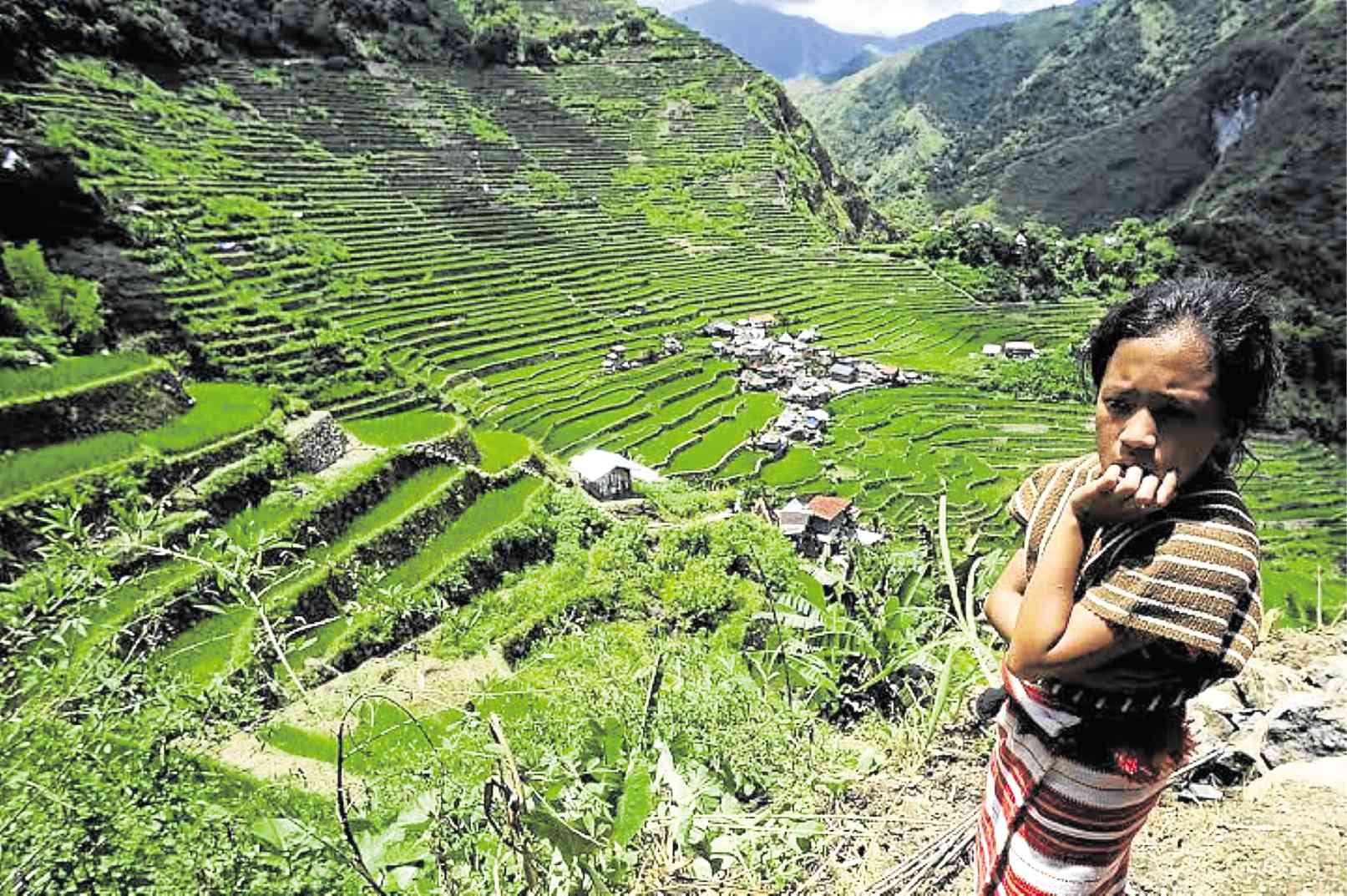Ifugao rice terraces to earn P107 M yearly under PPP deal

THE RICE terraces of Ifugao province have fed generations of Ifugao, but some of these have been abandoned due to out-migration and lack of interest among the youth to tend their families’ mountain farms. EV ESPIRITU / INQUIRER NORTH LUZON
BANAUE, Ifugao—Eyeing an annual windfall of P107 million in rice harvests, Ifugao leaders have offered what is essentially a public-private partnership program (PPP) to rehabilitate 300 hectares of this town’s abandoned rice terraces.
The proposal, designed as the traditional “chawwa,” offers investors a share in production if they shoulder the expense of reviving half of the town’s 600 ha of idle rice terraces, Mayor Jerry Dalipog told a news briefing here during the staging of the annual Imbayah Festival last week.
Max’s Restaurant intends to buy “Tinawon” for a set ofauthentic terrace-grown rice dishes. Tinawon refers to the indigenous rice that is grown in the terraces once a year.
Community support
Chawwa, Dalipog said, is a community support system. Terrace owners who are unable to tend to their farms can seek help from the neighborhood, in exchange for a share of the harvests, according to the 2015 state of conservation report of the Ifugao provincial government.
Article continues after this advertisementPoverty, out-migration, extreme weather changes and worn-out terrace walls are some of the reasons families have abandoned some of the terraces, according to the book, “Impact: Sustainable Tourism and the Preservation of the World Heritage Site of the Ifugao Rice Terraces.”
Article continues after this advertisementBut the province’s biggest problem is a young generation’s disinterest in terrace work.
“For many Ifugao people, the traditional rice terraces no longer satisfy their economic or culinary needs. As the landscape continue to lose its importance in daily life, the young Ifugao have become increasingly indifferent to its survival and conservation which largely contributed to its abandonment and deterioration,” according to the province’s rice terraces master plan.
Dalipog said 1,607 ha of rice terraces are cultivated in Banaue, yielding an average of 3.5 tons of rice per hectare. But buyers are asking for 70 tons of Tinawon a month, or 840 tons of Tinawon every year, he said.
Shorten rehab period
The solution is to revive 341.7 ha of abandoned terraces and produce the rest of Max’s requirements that would give terrace farmers earnings of as much as P107 million annually, Dalipog said.
Rehabilitating idle terraces may take two-and-a-half years without help, Dalipog said, because the town government does not have enough resources to speed up work.
He said investors could shorten the work to about a year and share the bounty with the farmers and the land owners.
Work entails replanting trees, repairing terrace walls and removing debris that obstruct the old water canals, he said. EV Espiritu and Vincent Cabreza, Inquirer Northern Luzon